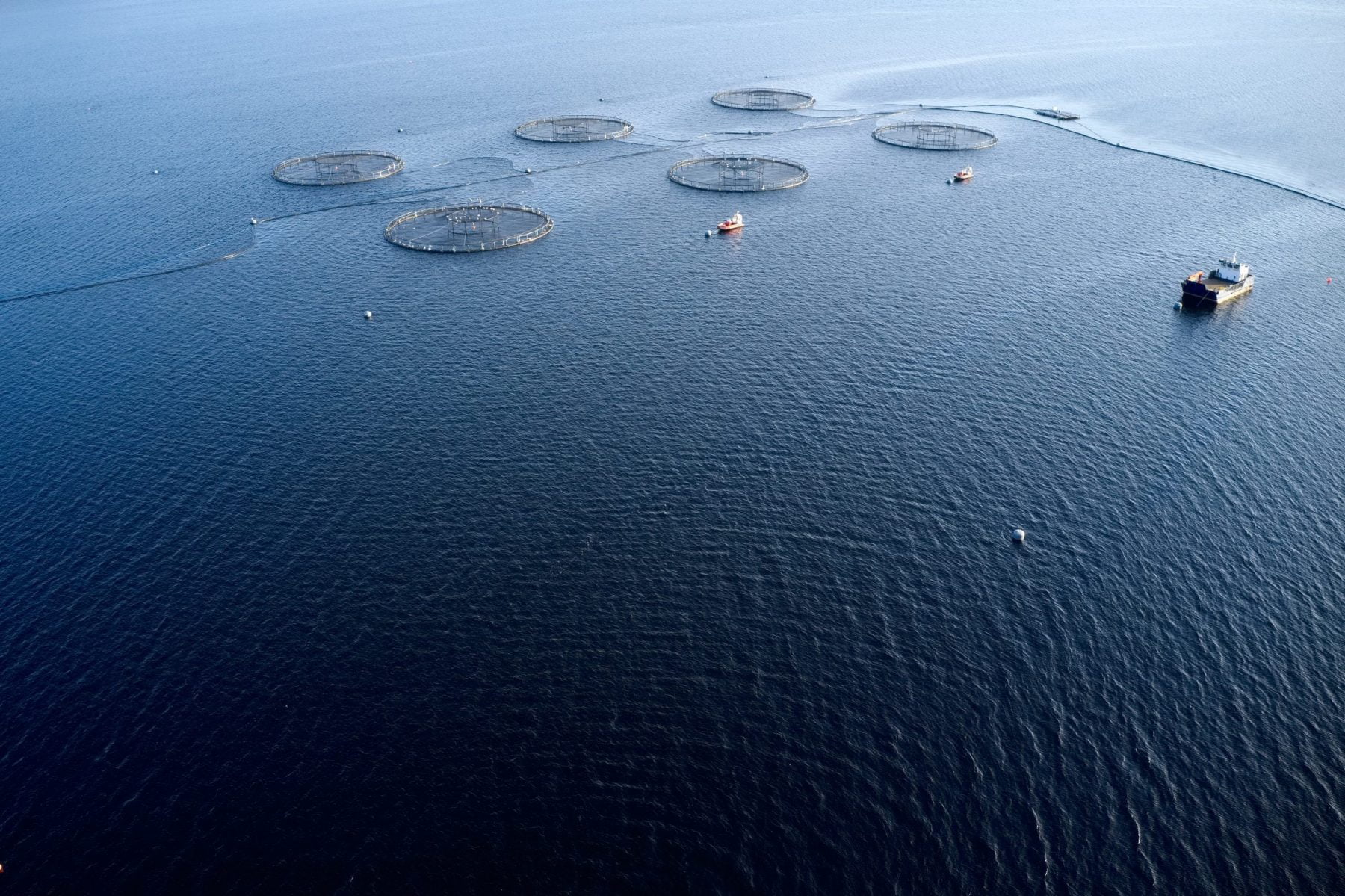For decades, fish consumption has risen by 3% annually across the globe as people swap meat for a healthier, more environmentally friendly protein source.
Fish consumption will continue rising as organisations look towards the ‘blue economy’: the sustainable use of ocean resources for economic growth and promotion of ‘blue food’ — all edible fish, aquatic plants, mussels and algae — to improve the food industry’s environmental impact.
Thanks to this growing demand for sustainable fish farming, the aquaculture industry has experienced healthy growth since 1970, and 52% of the seafood we consume is now produced via aquaculture installations.
However, there are some concerns with cultivating nearshore aquaculture projects that must be considered if the industry is to continue playing such a pivotal role in our food future.
Challenges of nearshore aquaculture
The vast majority of today’s aquaculture installations have been situated nearshore, where it is most convenient to maintain infrastructures and harvest fish.
But this is by no means the best place to farm.
Nearshore aquaculture has damaged coastal ecosystems. For example, the manmade ponds installed along coastlines to raise shrimp have devastated important mangrove forests in places like China and India. These forests are crucial for biodiversity conservation and climate regulation, so they must be protected.
The limited space available for nearshore aquaculture installations also means cages must be small, necessitating highly dense fish populations where disease runs rampant. As a result, parasites like sea lice can spill into natural ecosystems along with the drugs used to remove them. When such substances settle on the seafloor, a common occurrence in shallow waters, there is further ecosystem damage.
Small cages may also increase the chances of interbreeding. As farmed fish escape cramped spaces and integrate with nearby wild fish populations, unwanted genes can be added to the mix — interfering with the recovery of species with declining populations, such as wild salmon.
Moreover, coastal development programmes have interfered with aquaculture farmers’ ability to find available ocean space near the shore, resulting in potential user conflict. Although marker buoys can significantly increase safety through clear indications of usage, restrictions and hazards, suitable space is becoming harder and harder to come by.
The solution?
Moving these aquaculture projects offshore where there is more room for bigger cages. Waves and wind also contribute to improved oxygen levels at sea, leading to better quality water and healthier fish.
Still, offshore aquaculture comes with its own considerations, like the difficulty of monitoring in hard-to-reach locations and the planning required to ensure safe journeys amidst harsh weather conditions out at sea…
Offshore aquaculture and marine aids to navigation
Unlike conventional farms with fences and roads to guide pedestrians and drivers, aquaculture sites require highly specialised and robust perimeter marking and signalling technology for vessels operating around the clock in their vicinity.
Marine aids to navigation (AtoN) are essential to maximise visibility and ensure ships steer clear of hazardous aquaculture sites, avoiding costly damage to cages and nets.
Data-driven AtoN, in particular, are key to safe and efficient offshore aquaculture, as they can transmit key information about the conditions at sea to users on land — meaning no wasted or unsafe trips when weather and sea conditions are less than ideal.
However, these buoys can cost upwards of £70,000 and traditionally use disposable batteries, which is less than ideal for fisheries
Small-scale fish farming
The AquaNode, on the other hand, is an excellent, low-cost option for all types of offshore aquaculture.
This small, lightweight wave data sensor solution has low power consumption and can be retrofitted to new or existing buoy platforms. The sensor collects accurate ocean data, such as wave height and temperature, in near real-time, which can then be used to set alerts and generate automated messages — guiding the everyday ‘go’ or ‘no-go’ decisions made by workers on fish farms.
Aquaculture research
Aquaculture research in large-scale marine laboratories can also benefit from data buoys, such as
the Mobilis DB 2400. This large data buoy can withstand particularly tough conditions, including temperatures as low as minus 30 degrees and features an onboard fuel cell, which provides an uninterrupted, self-generating energy supply.
This data buoy also boasts a ‘smart’ winch and four moon pools, which allow instruments to be lowered to depths of up to 55 m without risk to the equipment.
Hydrosphere recently worked with Mobilis to deliver the DB 2400 as part of a project for SINTEF, one of Europe’s largest independent research organisations, and the OceanLab Marine Observatory in Norway.
At the forefront of aquaculture infrastructure
Aquaculture is a vital and rapidly growing industry, which will be crucial to meeting future demand for seafood. Earlier this year, Hydrosphere was proud to exhibit at Aquaculture UK — the most significant aquaculture event in the UK and a leading showcase for the sector.
Hydrosphere has been at the forefront of critical aquaculture infrastructure technology for almost 30 years, providing innovative solutions and cost-effective marine aids to navigation.
We design, build, install and maintain bespoke systems for customers and marine industry authorities, offering a range of reliable and durable navigation buoys of various sizes which can be coupled with solar or battery-powered lighting solutions.
Hydrosphere is the UK’s leading supplier of marine AtoN, with nearly 30 years of experience providing reliable, durable solutions for use in aquaculture installations. To discuss how we can help with your aquaculture project, contact us at +44 (0)1420 520374 or email sales@hydrosphere.co.uk.








